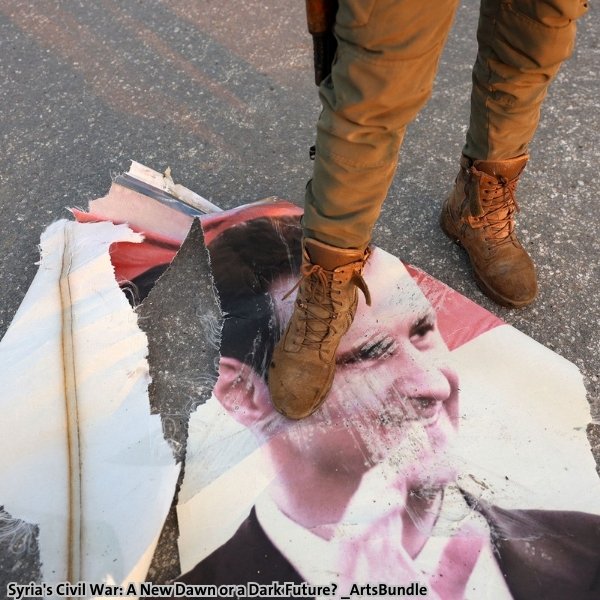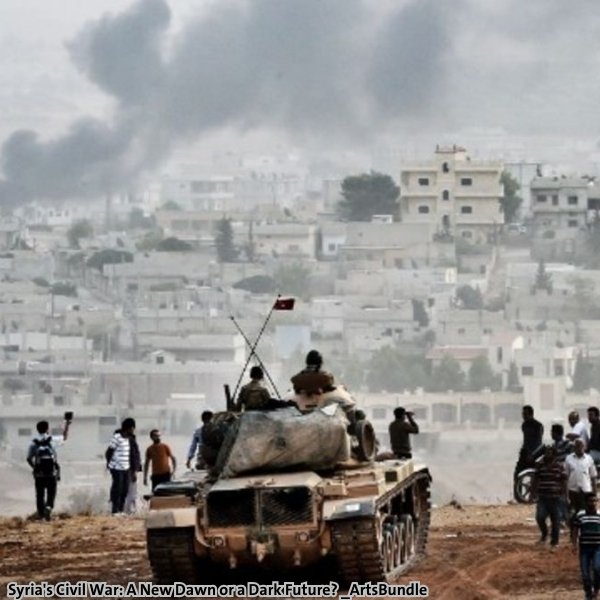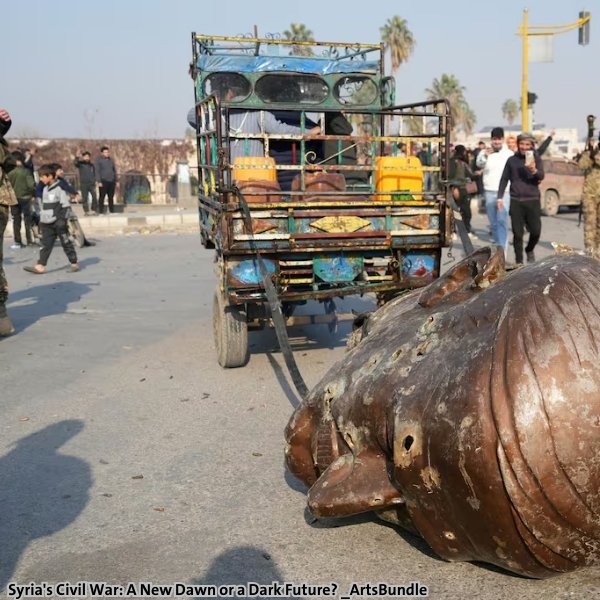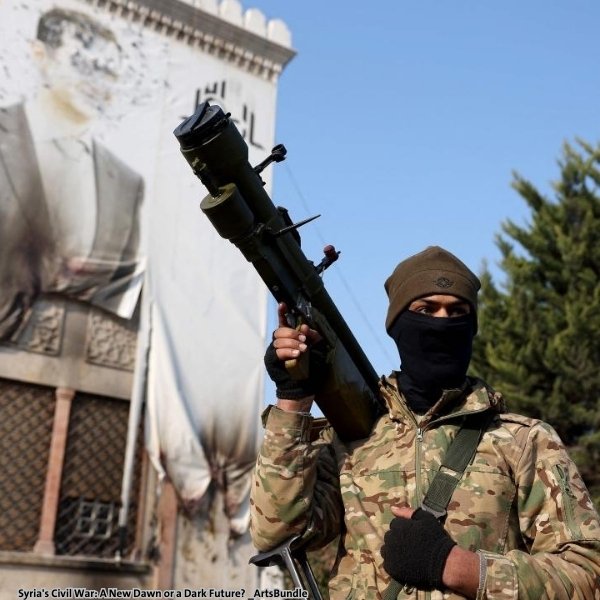For over a decade, Syria has been caught in a tragic civil war, characterized by strife, obstacles, and political unrest. As discussions regarding the possible exit of President Bashar al-Assad intensify, the future of Syria emerges as a complex issue that weaves together politics, society, and international relations, highlighting a pivotal time in its history.
Syria’s civil war

The scenario previously regarded as a stagnant conflict has now evolved into a lively battleground. In December 2024, rebel troops launched an unexpected attack, capturing crucial cities such as Aleppo and Hama. This shift marks the most significant escalation in recent times, disrupting the fragile equilibrium that has existed since 2020.
The Syrian Civil War, which started in 2011, was triggered by a variety of interconnected factors. Protests inspired by the Arab Spring erupted against President Bashar al-Assad’s authoritarian regime, with citizens calling for political and economic changes.
The government’s harsh crackdown, including violent measures against peaceful protesters, intensified the crisis. Additionally, issues like corruption, economic disparity, and sectarian strife escalated the conflict. Over time, the war attracted numerous regional and global players, turning it into a proxy conflict with catastrophic effects on the Syrian population.
Causes of the Syrian Civil War

There are many causes of this war, such as:
- Arab Spring Protests: Motivated by the Arab Spring, Syrians rallied for political and economic reforms, seeking an end to corruption and oppressive governance.
- Government Repression: The Assad regime met the protests with severe violence, employing force and arrests to quell opposition.
- Sectarian Tensions: Long-standing sectarian divides, especially between the Alawite minority (to which the Assads belong) and the Sunni majority, heightened the conflict.
- Foreign Intervention: Various regional and international powers, including Russia, Iran, Turkey, and the United States, intervened, backing different factions and extending the duration of the war.
- Rise of Extremist Groups: The turmoil of the civil war enabled extremist organizations like ISIS to expand their influence and control territory, further destabilizing the area.
The End of an Era

The downfall of Assad represents the end of a chaotic era in Syrian history. His rule, characterized by civil war, mass displacement, and global sanctions, has left lasting wounds on the country.
Yet, Assad’s exit doesn’t guarantee an immediate improvement. It’s akin to extracting a decayed tooth—the immediate pain may subside, but true recovery takes time and attention.
Syria’s Political Landscape

Who will take the reins after Assad? The political landscape in Syria is quite divided, with various opposition factions, regional powers, and global actors all competing for control. If a power vacuum emerges, it could result in further disorder and potentially reignite the civil war unless there is a well-thought-out plan for transitional leadership.
The Importance of Inclusive Governance
To restore trust in Syria and prevent a resurgence of the civil war, it’s essential that governance is inclusive and reflects the diverse ethnic and religious communities. Can the opposition come together to offer a unified vision, or will their internal conflicts obstruct advancement?
Economic Hurdles Ahead
Syria’s economy is in dire straits, grappling with high unemployment, soaring inflation, and pervasive poverty affecting its citizens.
The devastation caused by the civil war has compounded these challenges. Revitalizing Infrastructure The aftermath of years of conflict has left urban areas in disarray.
It is crucial to rebuild essential infrastructure—such as homes, schools, hospitals, and roads—to pave the way for economic recovery and prevent further instability.
Utilizing Natural Resources Syria’s oil and agricultural industries hold potential for revitalization, but the question remains: will these resources serve the people or be taken advantage of by outside forces, possibly reigniting the civil war?
Mending the Social Fabric
- The conflict has not only damaged physical structures but has also fractured communities.
- Bridging Deep Divides
- Addressing ethnic and sectarian strife through open dialogue and reconciliation initiatives is vital.
Humanitarian Assistance and Support
- Millions of Syrians are displaced, either within the country or as refugees abroad. Facilitating their return and resettlement poses a significant challenge.
- The Importance of NGOs
- Non-governmental organizations have been crucial for many Syrians.
Global Influence
- Syria has become a focal point for various regional and global powers, including Russia, Iran, Turkey, and the U.S.
- Navigating Foreign Interests
- As Syria embarks on its rebuilding journey, how can it reduce outside interference while still benefiting from foreign aid and expertise?
- Also, read: South Korea Ends Martial Law Amid Crisis
The Role of Neighboring Countries
- Nations like Lebanon, Jordan, and Turkey have faced the brunt of the refugee crisis and its geopolitical consequences.
- Collaborative Regional Efforts
The Promise of Syrian Youth
- The youth of Syria embody the nation’s potential for a brighter future.
- Focusing on Education
- Investing in education is essential to empower young people to become the leaders of tomorrow.
The Impact of Surrounding Countries
- Nations such as Lebanon, Jordan, and Turkey have faced significant challenges due to the refugee crisis and its geopolitical implications.
- Collaborative Efforts
The Potential of Syrian Youth
- The young people of Syria embody the nation’s greatest promise for the future.
- Fostering Education
- By investing in education, we can empower the youth to become the leaders of tomorrow. Will Syria make this crucial investment?
Paths to Reconciliation
- In the aftermath of conflict, societies often grapple with a decision: pursue vengeance or work towards peace.
- Truth and Reconciliation Initiatives
- Examples from countries like South Africa illustrate the potential benefits of such initiatives.
Can Syria Find Stability?
While stability may feel like a far-off goal, it is within reach through persistent efforts and global assistance. Overcoming the challenges posed by the civil war will be essential to achieving this.
Key Elements for Stability
Political changes, economic revival, and social unity are crucial. Which of these will be the toughest hurdle to overcome in the aftermath of the civil war?
Cultural Renewal Amidst Destruction
- Syria’s vibrant history and culture have been deeply affected by the conflict, yet they can also foster unity.
- Safeguarding Heritage Sites
- Could the restoration of cultural landmarks act as beacons of hope and resilience?
The Path Ahead: Steps Toward Progress

Creating a new Syria will demand courageous actions and steadfast dedication.
Immediate Objectives:
- Prioritize urgent needs such as housing, nutrition, and safety.
- Long-Term Aspirations: Formulate strategies for economic diversification, educational reform, and social harmony.
A Global Perspective
- The international community is closely monitoring Syria.
- International Assistance vs. Sovereignty: Finding a balance between accepting support and preserving independence will be essential.
Possible Risks and Challenges
The journey to recovery is often fraught with obstacles. such as:
- Political Unrest
- Could power struggles hinder advancement?
- Economic Exploitation
- What measures can Syria take to safeguard its resources from being manipulated in global politics?
Finally, Syria’s future beyond Assad is likely to be filled with both obstacles and possibilities. The country has faced tremendous suffering during the civil war, but its citizens continue to show remarkable strength. Moving ahead will demand teamwork, inspiring leadership, and international backing. Syria’s narrative is still unfolding, and the world watches closely, wishing for a more hopeful next chapter.
What happens immediately after Assad’s fall?
A transitional government will likely take charge, though political instability could pose challenges
How can Syria rebuild its economy?
By focusing on infrastructure, natural resources, and international investment while preventing corruption.
What role will Syrian refugees play in the country’s future?
Their return will be vital for rebuilding communities and the workforce, though it requires significant support.
Can Syria become a democracy?
While possible, it depends on inclusive governance, education, and political reform.
What are the risks of international involvement?
Foreign powers could exploit Syria’s resources and influence its politics for their interests.





